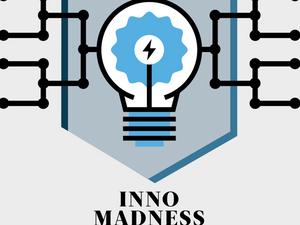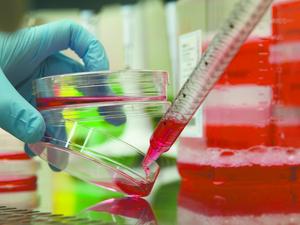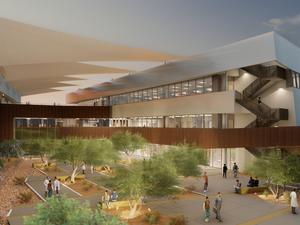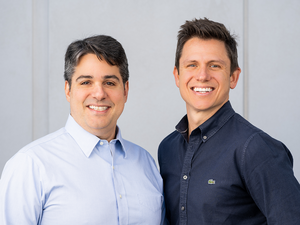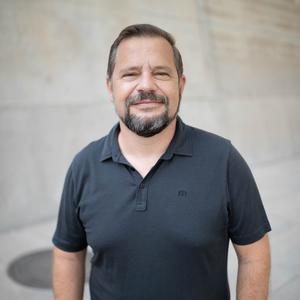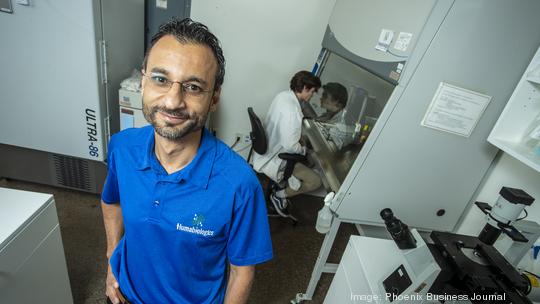
For the CEO of Phoenix-based biotech startup Humabiologics Inc., winning the inaugural AZ Inno Madness contest was the latest validation after years of growth that exceeded expectations.
The AZ Inno Madness contest, a friendly bracket-style battle for votes and bragging rights, pitted 16 Valley startups against each other and narrowed them down over four weeks in March. The guiding question for voters in the contest was, “Which startup would you invest in?”
The answer came after some fierce competition that included thousands of votes being cast right up to the final day of each round. In the end, Humabiologics had the edge over automated document processing company qBotica in the championship round.
Humabiologics got its start in 2018 as a one-man side operation when founder and CEO Mohammad Albanna was working as vice president for clinical and scientific affairs at Pinnacle Transplant Technologies, a human tissue bank in Phoenix that provides donated organs for transplant recipients.
While there, Albanna could see how a significant amount of the donated human tissue would go to waste because, for various reasons that had nothing to do with the quality of the tissue, it could not be used. He wanted to find a way to put that to use rather than discarding it.
Along with pursuing scientific curiosity, he said his initial aim was to bridge a gap. It was only after demand started coming in that it began to take the shape of a product.
“That’s honestly how this all started,” Albanna said. “You’re always striving to do the best to protect and honor that donated tissue.”
He started contacting researchers around the U.S. to see if they wanted biomaterials that could be derived from the tissue. It started on LinkedIn, and news of what he was doing began to spread by word of mouth, he said. Customers include scientists at academic and industry labs, including those at major pharmaceutical companies.
'Building blocks'
What Albanna was offering was the biological “building blocks,” as he put it, such as collagen, that researchers can then take and use it to create models for cancer or other treatments. In one partnership, the material is being used to create a model of a liver to test toxicity of new treatments.
Researchers can also use the material in 3D printers to build, for instance, a blood vessel, using “bio-ink" made of cells and Humabiologics’ products. The material can also be used for the development of medical treatments specific to particular people or groups.
Humabiologics developed its own methods for extracting those building blocks after partnering with multiple tissue banks to get the skin and bone needed to create its products.
“We are the only company in the world that actually provides biomaterials derived from humans,“ Albanna said.
Human-derived materials have a clear advantage over the animal-derived ones that have typically been used in research, Albanna said. For one thing, he said, an overwhelming majority of animal-tested safety results don’t end up working.
“When you put the human cells with the human material you get results that are more realistic,“ Albanna said.
For researchers, who have always wanted to work with human biomaterials, it’s a “no-brainer” to choose human over animal products, he said.
“The goal is to reduce animal testing and eventually eliminate animal testing,” Albanna said. “We’re one of the pieces in that puzzle.”
The company actually launched its products in September 2019. Within months, Albanna was shipping to South Carolina, then to Australia, China and Canada.
Pandemic challenges
By the end of 2019, Albanna had left his job at Pinnacle to focus full time on his fledgling company, where he was the only member of the staff until February 2020. His company’s lab space — which now covers about 4,000 square feet at the Center for Entrepreneurial Innovation at GateWay Community College-Washington Campus — started with about 250 square feet in the same building.
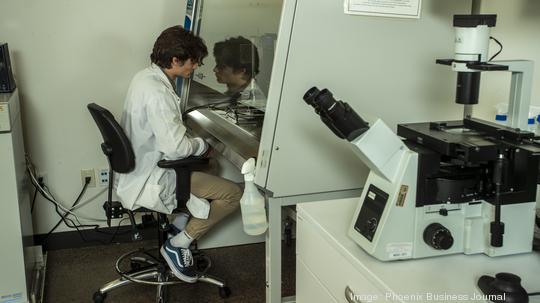
And that time of early growth came just before and after the Covid-19 pandemic hit.
As they were for so many companies, those first months were a time of uncertainty. The shutdowns came and at first it wasn’t clear whether research projects would be put on hold. But some labs remained open and placed orders. By the time the Covid-19 vaccines rolled out, business was strong.
“It turned out to be for us a very great experience in terms of focusing the business, trying to build inventory, work on our business, work on our mission … and prepare for what’s going to happen after the pandemic,” he said.
In fact, the company even got its first big cash infusion at that time, in June 2020 receiving $1 million in seed funding after it was a finalist in the BIO International 2019 Startup Stadium in Philadelphia.
Before that, Albanna had put $100,000 of his own money into the project. Now the company is in the middle of a new funding round that started in January and is aiming for $3 million.
The growth has allowed the company to increase its staff to its current level of five full-timers and three part-timers. Albanna said he is looking to add two more people, including a production manager as the company increases manufacturing and adds products to meet the requests from customers.
Known in his field
Along with the fact that his product is something researchers want, Albanna was able to get buy-in from them fairly quickly because his expertise is well known.
“I have a reputation in the field,” he said. “They trust what I say.”
Albanna’s reputation includes training under Anthony Atala, M.D., a pioneer in regenerative medicine and 3D bioprinting, whose team developed the first lab-grown organ to be transplanted it into a human in the early 1990s. Albanna said he was also part of a project that used collagen from rat tail to bioprint skin for armed services personnel who were wounded in war. He is also the 2013 winner of the global Thomas Edison Gold Award in Innovation.
The fast attention his company has attracted means expansion is happening faster than Albanna ever anticipated, and it is taking him into new directions. One of those avenues is clinical testing, which requires changes in the manufacturing of the biomaterials — with a more controlled, guided and quality tested process than what is used for research materials.
“Now it’s happening soon,” Albanna said. “We’re actually having a customer planning to start clinical trials in the next 24 months.”
Still, even as Humabiologics adapts to greater demand and opportunities, Albanna said he wants to remain focused on the company’s mission and stay true to the donors who have made the work possible.
“Always to be conscious of the gift, what you can do with it,“ he said.
